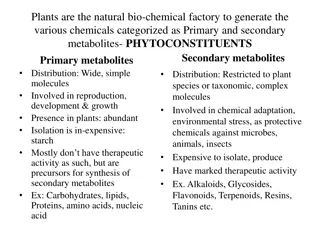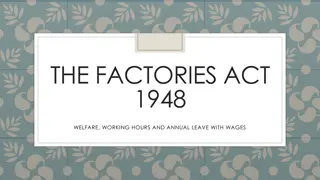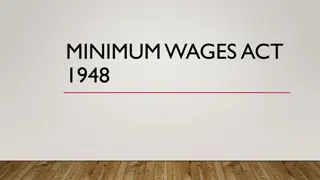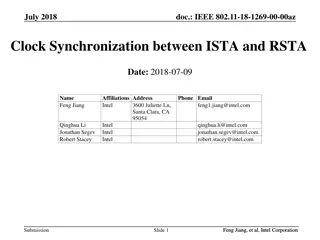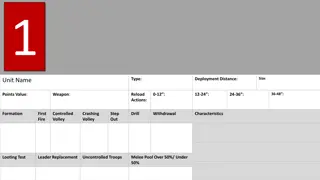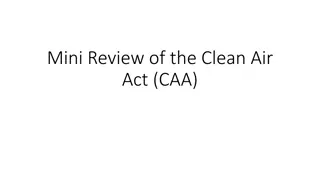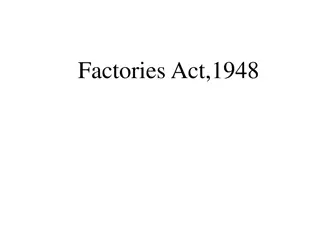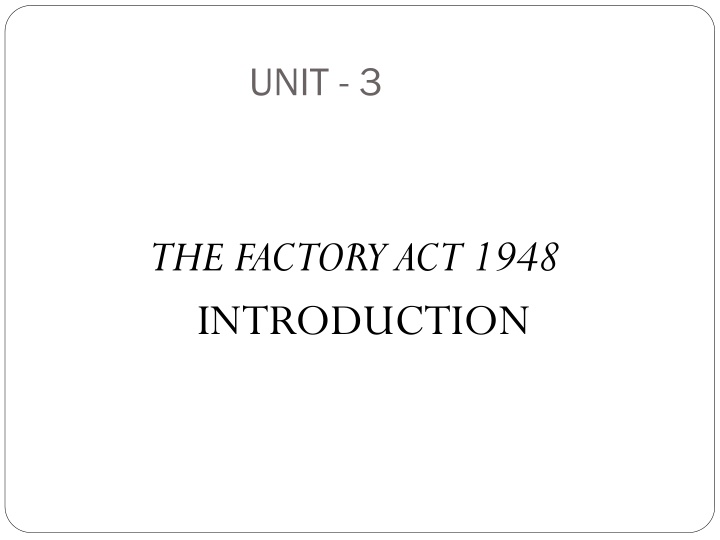
Factory Act 1948: Objectives, Scope, and Terminology
The Factories Act of 1948 in India aims to safeguard workers' interests and promote their safety, health, and welfare in factories. It sets out regulations for working conditions, safety measures, and the employment of workers, including provisions for approval of factory plans and working hour regulations. The Act applies to all factories employing a certain number of workers and aims to prevent exploitation and ensure workers' well-being.
Download Presentation

Please find below an Image/Link to download the presentation.
The content on the website is provided AS IS for your information and personal use only. It may not be sold, licensed, or shared on other websites without obtaining consent from the author. If you encounter any issues during the download, it is possible that the publisher has removed the file from their server.
You are allowed to download the files provided on this website for personal or commercial use, subject to the condition that they are used lawfully. All files are the property of their respective owners.
The content on the website is provided AS IS for your information and personal use only. It may not be sold, licensed, or shared on other websites without obtaining consent from the author.
E N D
Presentation Transcript
UNIT - 3 THE FACTORY ACT 1948 INTRODUCTION
Applicability of Factories Act, 1948 Applicability of Factories Act, 1948 INTRODUCTION The Factories Act 1948 came into force on 1 April 1949. It extends to the whole of India. The provisions of this act are applicable to all factories including State Government and Central Government factories. This act contains 120 sections. The Act is applicable to any factory whereon ten or more workers are working, or were working on any day of the preceding twelve months, and in any part of which a manufacturing process is being carried on with the aid of power, or is ordinarily so carried on, or whereon twenty or more workers are working, or were working on any day of the preceding twelve months, and in any part of which a manufacturing process is being carried on without the aid of power The Factories Act, 1948 is a beneficial legislation. The aim and object of the Act is essentially to safeguard the interests of workers, stop their exploitation and take care of their safety, hygiene and welfare at their places of work. It casts various obligations, duties and responsibilities on the occupier of a factory and also on the factory manager
MAIN OBJECTIVES OF MAIN OBJECTIVES OF THE FACTORIES ACT, 1948 THE FACTORIES ACT, 1948 To ensure adequate safety measures and to promote the health and welfare of the workers employed in factories. To prevent haphazard growth of factories through the provisions related to the approval of plans before the creation of a factory. To regulate the working condition in factories, regulate the working hours, leave, holidays, overtime, employment of children, women an d young persons ext.
SCOPE AND COVERAGE SCOPE AND COVERAGE Regulates working condition in factories. Basic minimum requirements for ensuring safety, health and welfare of workers. Applicable to all workers. Applicable to all factories using power and employing 10 or more workers, and if not using power, employing 20 or more workers on any day of the preceding 12 months.
TERMINOLOGY Factory means [section 2 (m)] Means any premises including the precincts thereof where ten or more persons are working in any manufacturing process being carried on with aid of power and where twenty or more workers are working without the aid of power. Very important Features of the Factories Act, 1948 The present Factories Act, 1948 consists of 120 Sections divided into XI Chapters, mainly dealing with procedural and enabling provisions to make the law effectively enforceable by imposing responsibilities on the employer and occupier of the factories. But, as has been discussed earlier, the main - purpose of the Act is to provide for Health, Safety and Welfare of the workers of the Factories.





